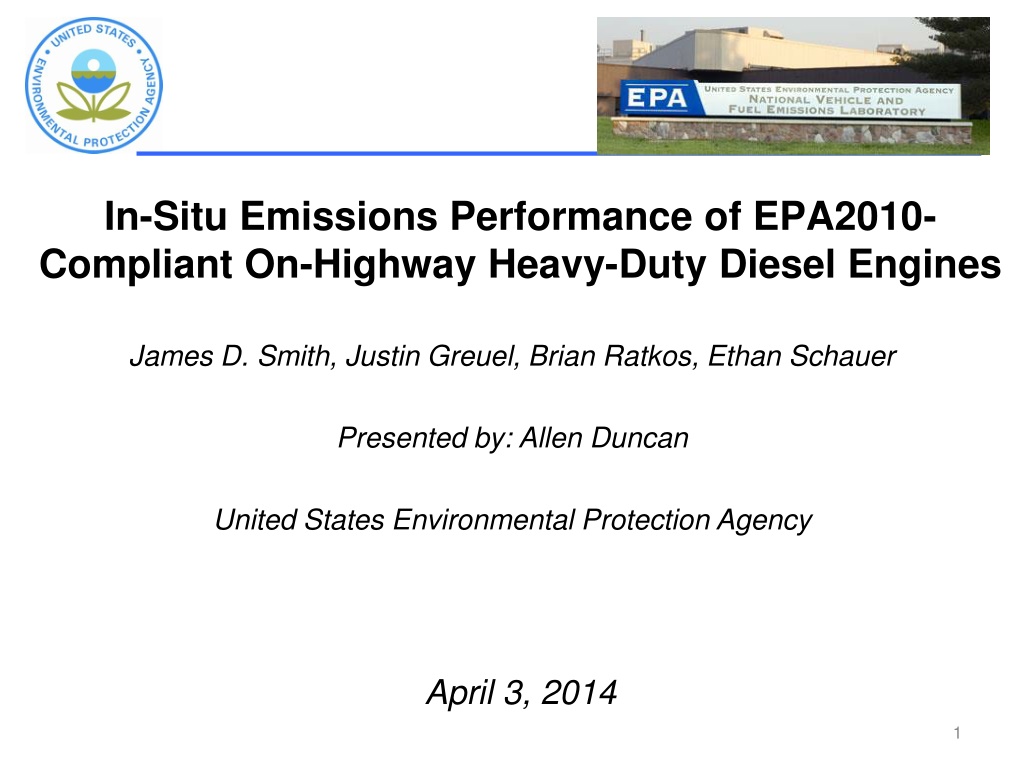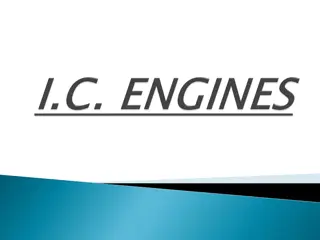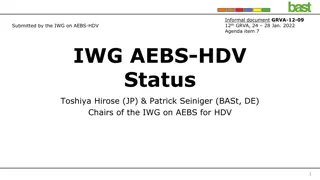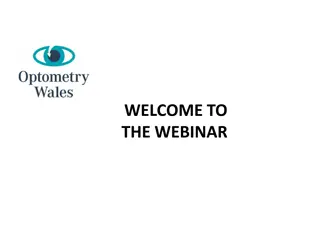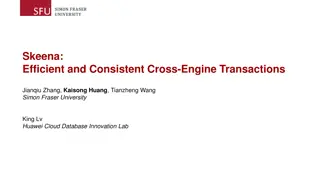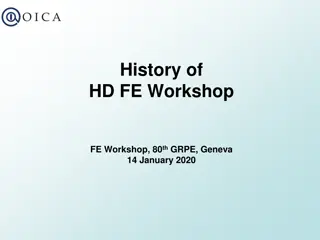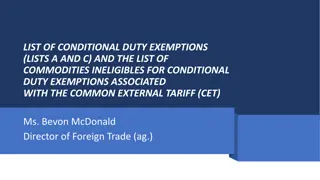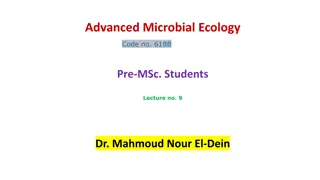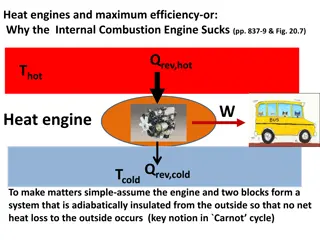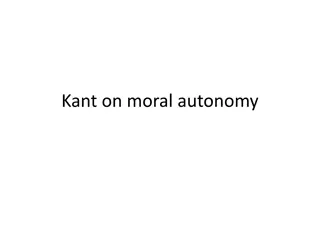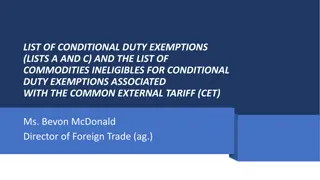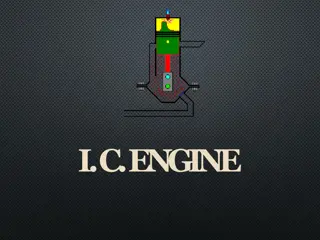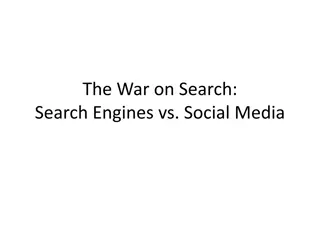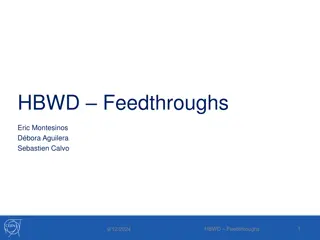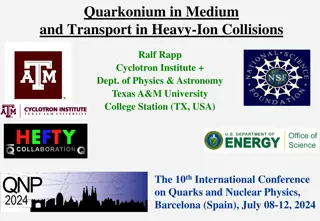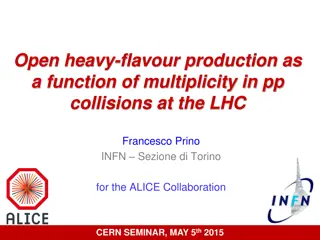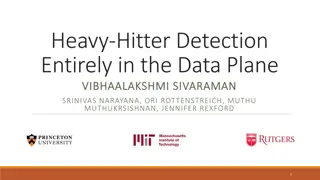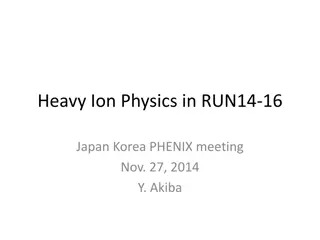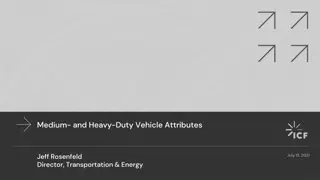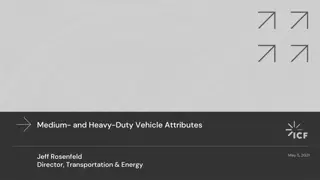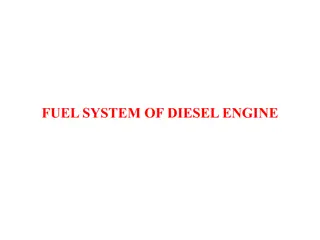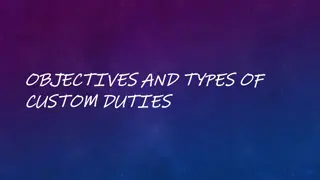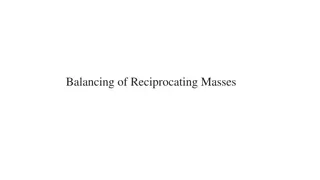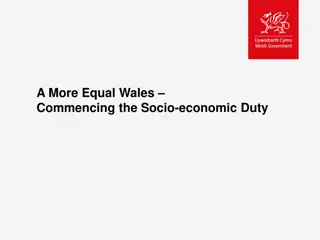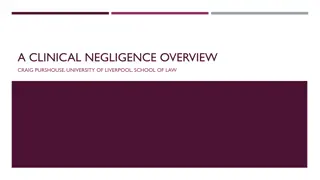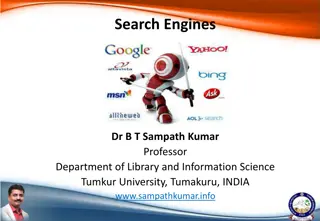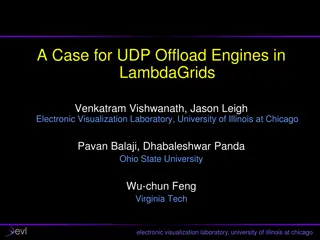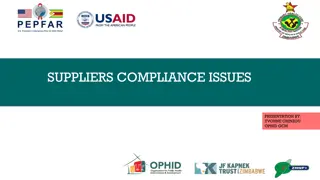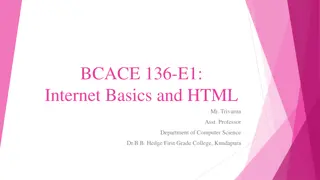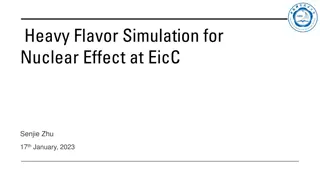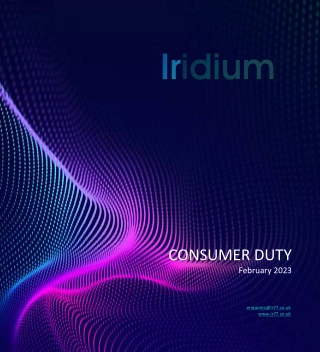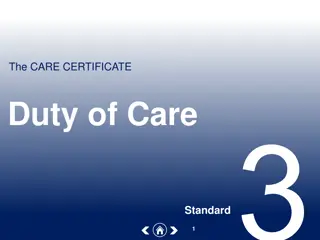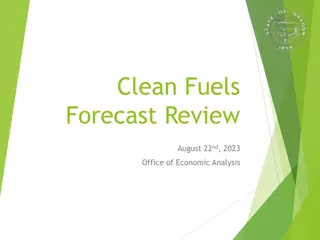Ensuring Compliance and Performance of EPA2010-Compliant Heavy-Duty Diesel Engines
This documentation explores the in-situ emissions performance of EPA2010-compliant heavy-duty diesel engines, focusing on compliance goals, demonstrating compliance through test cycles, and in-use testing program goals. It discusses the importance of verifying compliance, forecasting, certification, and how manufacturers avoid costly encounters with regulators. The in-use testing program aims to assess if engines meet not-to-exceed emission standards under various conditions, providing valuable insights for EPA certification staff.
Download Presentation

Please find below an Image/Link to download the presentation.
The content on the website is provided AS IS for your information and personal use only. It may not be sold, licensed, or shared on other websites without obtaining consent from the author. Download presentation by click this link. If you encounter any issues during the download, it is possible that the publisher has removed the file from their server.
E N D
Presentation Transcript
In-Situ Emissions Performance of EPA2010- Compliant On-Highway Heavy-Duty Diesel Engines James D. Smith, Justin Greuel, Brian Ratkos, Ethan Schauer Presented by: Allen Duncan United States Environmental Protection Agency April 3, 2014 1
Compliance Goals Assist manufacturers in achieving compliance with regulations Avoids future (and costly) encounters with enforcement and/or other regulators Ensure that the anticipated benefits from emission rules are being realized Ensure a level playing field for all regulated entities Manufacturers who cheat may be at an economic advantage How do we do this? Forecasting compliance Certification Relies on manufacturer data In-depth technical descriptions Confirmatory testing Verifies that manufacturer data is valid and accurate Verifying compliance In-use testing Manufacturer testing EPA testing Auditing Defect investigation 2
Demonstrating Compliance Engines/vehicles are operated over infinite combinations of routes and ambient conditions Impossible to test over all of them Test cycles are specified to elicit particular behaviors For example, heavy-duty diesel engines have two test cycles: FTP 2-Part test typical of mixed driving SET Steady-state test typical of highway cruising These are conducted in a narrow range of ambient conditions Also do not address other types of driving Off-cycle emission control is demonstrated and validated through two means Auxiliary emission control device (AECD) descriptions Not-to-exceed (NTE) limits Specific rules for when emissions can be measured Emissions can be 1.5x standard during NTE events Primary means for verifying off-cycle emissions levels is through in- use testing 3
In-Use Test Program Goals Are 2010+ engines complying with not-to-exceed (NTE) emission standards? Testing over mostly highway routes with a loaded trailer Large number of NTE events Are these engines achieving the expected reduction in emissions under conditions not covered by NTE test procedures? Extended idling Light loading Transient conditions Urban test route Unloaded (no trailer) testing Advanced data analysis Total NOx (per testing day) Extended idling analysis Information from this type of study provides valuable information for EPA certification staff Accuracy of emission control system descriptions from certification Strengths and areas of future improvement for each system 4
Test Subjects For heavy-duty vehicles, the engines are regulated (and certified) independent of the vehicle In-use testing can involve in-situ methods (engine-in-vehicle) using NTE procedures Engine can be removed and tested on a dynamometer over the certification test cycles or evaluated under NTE procedures This program tested engines while they remained in the vehicles Class-8 semi-trucks Engines are generally 6-cylinder diesels Power: 400-500 hp Torque: 1500-1700 ft-lbs Rated to haul up to 80,000 lbs Manufacturers: Cummins, Detroit Diesel, Navistar, PACCAR, Volvo Focusing on 2010 and newer engines Final phase-in of 0.20 g/bhp-hr NOx emision standard Technologies (typical): Selective catalytic reduction (SCR) aftertreatment Cooled exhaust gas recirculation (EGR) Diesel particulate filters (DPF) 5
Test Program Outline/Methods Test program is based on 3 elements Highway emissions testing (loaded) 5 Predominantly highway routes Highway emissions testing (unloaded) City emissions testing Test route that involves more stop & go driving Emissions are measured using a portable emissions measurement system (PEMS) & exhaust flowmeter Can measure CO2, CO, HC, & NOx (g/hr basis) Torque estimated from engine controller Combined, we achieve measurements in the same units as the emission standards (g/bhp-hr) Data processing NTE-specific (discrete events with specific boundary conditions Overall NOx emissions (total emissions vs total work over a testing day) Overall NOx without idle (emissions excluded if vehicle speed = 0) 6
Initial Observations NTE Performance 1.1 All vehicles have had no issues meeting NTE requirements when tested according to 86, subpart T Required to meet NTE standards 90% of the time Pass ratio 1.0 0.9 0.8 0.7 Pass Ratio 0.6 0.5 0.4 0.3 Freeway NTE performance was similar over different drive types However, urban driving led to fewer NTE events (transient effect) No-trailer driving led to even fewer NTE events (light load) 0.2 Urban 0.1 No-Trailer 0.0 ISX15 DD15 DD13 MF13 MX13 D13 Average pass ratios over all testing (2 vehicles per engine family). Pass ratio error bars are the limits witnessed during testing. 7
NTE NOx Emission Levels 250 Freeway NOx emission rates during NTE events were generally reflective of emission control technology and certified emission level Maxxforce 13 used high-EGR to control NOx and was certified to a NOx emissions level of 0.50 g/bhp-hr (vs 0.20 standard) ISX15 was certified to a NOx emissions level of 0.35 g/bhp-hr All others were certified to the emission standard (0.20 g/bhp- hr) Urban Average NOx during NTE Events (g/hr)) 200 No-Trailer 150 100 50 0 ISX15 DD15 DD13 MF13 MX13 D13 Average NOx emission rates for each engine family during NTE events. The emission rates of the SCR- equipped engines typically scale to brake-specific emissions in the 0.05 to 0.25 g/bhp-hr range under NTE-type power output conditions, SCR-equipped engines performed quite well under NTE conditions High exhaust temperatures 8
Overall NOx Performance In addition to NTE performance, its important to consider overall NOx control Looked at total NOx vs total work per testing day (including idle) 140 Freeway Urban Average Total NOx, including idle (g/hr) 120 No-Trailer 100 80 60 DD13, DD15 and D13 engines showed exceptional NOx control MX13 slightly higher than the other engines certified to the 0.20 g/bhp- hr standard (will be addressed later) ISX15 and MF 13 certified to higher emissions levels (0.35 and 0.50 g/bhp-hr, resp.) Some of the SCR-equipped engines had challenges with light-load conditions (low exhaust temp) 40 20 0 ISX15 DD15 DD13 MF13 MX13 D13 Average NOx emission rates for each engine family over the each testing day (including idle). Generally, no- trailer conditions were most challenging to the SCR- based systems. 9
Overall NOx Performance No Idle By excluding NOx contributions from idling, we get a clearer picture of how each engine/system performs in-use 140 Freeway Urban Average Total NOx, without idle (g/hr) 120 No-Trailer 100 The SCR engines all exhibited well- controlled NOx emissions during freeway and urban driving No-trailer operation remained somewhat challenging due to low exhaust temperatures ISX15 particularly sensitive to low exhaust temperature MX13 emissions much lower when excluding idle 80 60 40 20 0 ISX15 DD15 DD13 MF13 MX13 D13 Average NOx emission rates for each engine family over the each testing day (excluding idle). High-EGR NOx control scaled to work done, with no-trailer emissions being much lower than loaded conditions 10
Overall NOx Performance Idle Average NOx emissions from idle operation are shown at right Most engines demonstrated emissions consistent with California s 30 g/hr standard Even though these were not the official test conditions 120 Average Idle NOx Emission Rate (g/hr) 100 80 60 40 MX13 had much higher emissions Only engines not certified to the CA standard 20 0 ISX15 DD15 DD13 MF13 MX13 D13 Demonstrates the importance of idle emissions reduction programs In some cases, idle emission rates are much higher than driving with a fully loaded trailer 11
Observations The engines tested in this study were found to be broadly compliant with NTE emission standards (pass-ratio based) In addition, most test candidates showed emission levels during NTE events to be similar to the applicable emission standard The number of qualifying NTE events was highly dependent on drive conditions and vehicle loading Total NOx emissions over each testing day revealed differences in emission control system capabilities In general, SCR systems performed well over conditions that produce high exhaust temperature Light-load conditions are challenging to these systems and measures taken to counteract the loss of emission control vary by manufacturer Effective thermal management strategies are essential NOx emissions from high-EGR systems were primarily a function of engine loading 12
Observations (cont.) & Next Steps NOx emissions from periods of extended idle were found to have potentially large impacts on overall NOx emissions Particularly true for the engine family not certified to the CA idle standard Demonstrates the importance of idle-reduction programs Next Steps Five midrange heavy-duty engines have been tested. Results will be presented internally summer 2014 and publically spring 2015 Testing of higher-mileage engines (deterioration effects) Nonroad CI engine testing to begin summer 2014 Dynamometer testing of On Highway engines to begin calendar 2014 13
Thank you for your attention Questions? Presenter contact information: Allen Duncan, Ph.D., P.E. Mechanical Engineer - Compliance Division United States Environmental Protection Agency 2000 Traverwood Dr. Ann Arbor, MI 48105 Ph: (734) 214-4273 Duncan.allen@epa.gov 14
